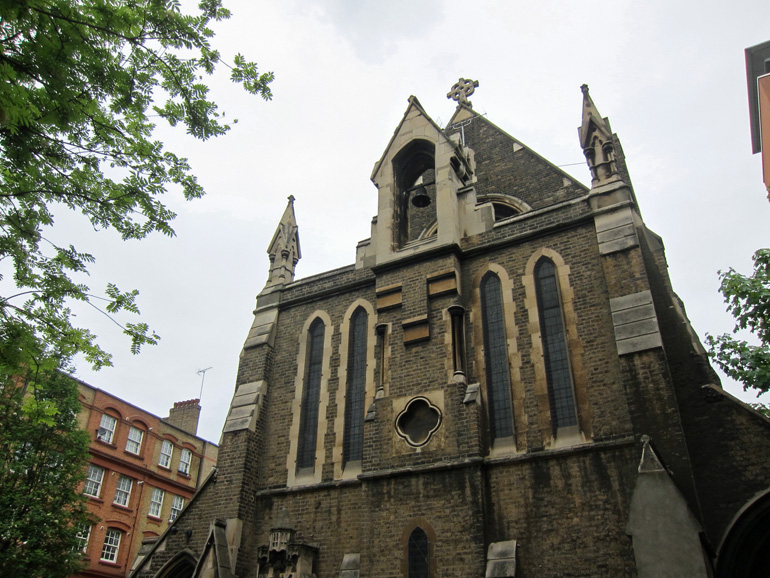Gotham Diary:
Doctrinally Focused
1 June 2012
The other day, Maureen Dowd complained about the authoritarian attitude of the Roman Catholic Church. Let’s breeze right past whatever it was that inspired a woman brought up in a pious Catholic family to imagine that such complaints might not be a complete waste of time, and proceed to a letter that a former Jesuit priest wrote in agreement. Ms Dowd had said,
So it makes me sad to see the Catholic Church grow so uncatholic, intent on loyalty testing, mind control and heresy hunting. Rather than all-embracing, the church hierarchy has become all-constricting.
To which Tim Iglesias, of Oakland, California, responded,
…Â I believe that they are pursuing a very deliberate strategy. They have decided that a smaller, more unified and fervently doctrinally focused church community is preferable to a welcoming, diverse and unrully one. All of their actions are consistent with this strategy. I mourn the loss of the catholic Catholic Church.
This exchange seemed as good an occasion as any for teasing out what might lie at the center of the purer church’s doctrinal focus. But first, a little history.
The Roman Catholic Church emerged from its near-death experience at the end of the Eighteenth Century with an appearance that seemed to go back for centuries but a severely altered interior. Beneath the preserved and even refreshed decorative fabric — the church buildings, the vestments, the liturgies, the religious orders, and of course the Apostolic Succession itself — the Church was not at all what it had been. How could it be? Like everything and everyone, it had been cast out of the ancien régime, and obliged to make its own way on its merits. Stripped of properties and the administrative power that went with them, as well as morally authoritative alliances with the governments of Catholic powers (far fewer in number when the commotion subsided), the Church ceased to be a temporal ruler with the unification of Italy. It became a sentimental operation, dispensing pastoral care and comfort to a secular world ever less interested in traditional ideas of the sacred.
This isn’t the place to consider the role played by the industrial revolution in causing huge shifts in how educated people imagined the universe, but I think that we can safely claim that the intellectual energy formerly devoted to working out fine points of metaphysical dogma was now harnessed to understanding the material mechanics of the universe. God, as it were, was left to take care of himself, dogmatically speaking. It is sobering to see how completely such issues as the Trinity and Transubstantiation lost the power to rile up civil discord; matters for which people had been prepared to kill (and die) no longer meshed with anyone’s intellectual outlook. It was against the background of this general indifference to speculative certainties that the Papacy pushed through two dogmatic alterations that would have been hotly contested in earlier times: the doctrines of the Immaculate Conception (1854) and of papal infallibility (1870). The most conspicuous exercise of the latter power concerned the Assumption of Mary (1950). This isn’t the place to assess the drift of ecclesiastical concerns from the core beliefs that were shared by Paul and Augustine, nor to tease out the misogyny implicit in making one woman, the mother of Jesus, alone in holiness of all her sex. It’s enough to note that bodies and sexuality were promoted as matter of doctinal concern, while no attempt was made to alter the institution of the priesthood. Â
Inevitably, Church leaders would find themselves confronted with ever-louder complaints from the likes of Maureen Dowd. The Augustinian settlement of Christian sexuality, in which laymen were permitted to marry and procreate but religious men and women were not, dedicating their lives to God, no longer made sense. The Church was no longer functionally above and apart from the secular world of the faithful; as the Protestants had demonstrated, spirituality did not suffer when prelates took wives. (And as for the unspeakable alternative, sought out by too many priests under the benighted protection of bishops whose allegiance to the confraternity was far stronger than any pastoral concern, we shall not speak of it.) While there might not be any objection to retirement from the world, insofar as it remained in and of the world, the Church’s insistence that it was nevertheless apart transformed it into what it has become: a hierarchical confraternity of celibate males that claims to have the first word, the last word, and every word in between on the subject of the Church’s constitution. If you are not a member of this confraternity, you have no standing to engage in a discussion — not that discussion is encouraged among those who are. This is the unlovely organization that, according to Tim Iglesias, Church leaders would like to purify.
The only object of doctrinal focus, therefore — at least, for Roman Catholics who are not priests — is the identity of the Church as an organization run and officiated by unmarried men. That is what being a member of the Roman Catholic Church has come down to.

